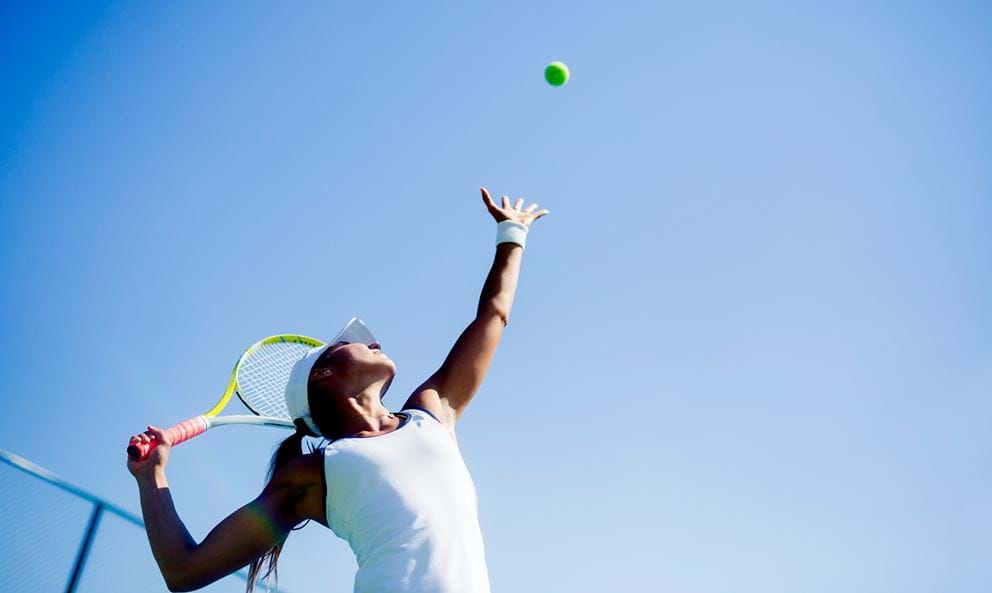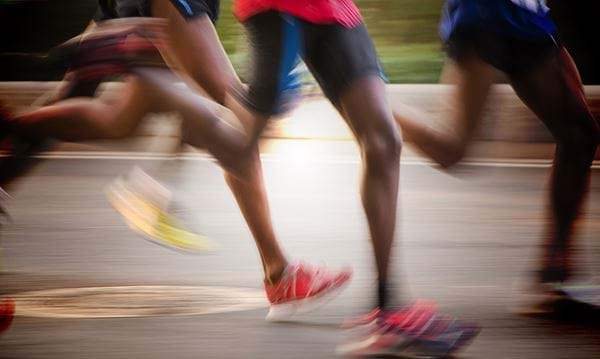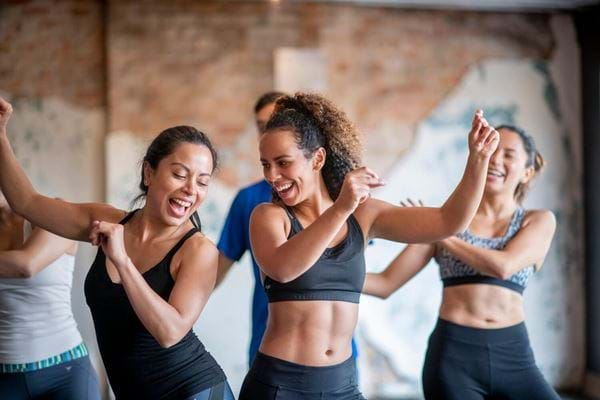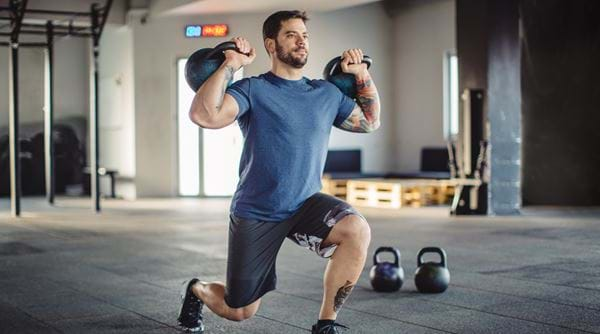The Best Gym Exercises for Tennis Players

Exercises for Tennis Players | Tennis Gym Workout Plan
Tennis requires endurance, speed, agility and explosive power, not all of which will come naturally just from playing on the court. Whether you’re training to be the next Djokovic or Williams, or just want the satisfaction of beating all your friends in a weekend game, a well-rounded gym workout routine is a great way to improve your performance while also boosting strength and fitness.
Read on for some of the best types of gym exercises to be including in your weekly fitness routines, as well as an example workout plan featuring a range of these movements so you can get training straight away.
Best Gym Exercises for Tennis Players
-
Strength training
Building overall body strength is crucial for tennis players and it’s important to work on both upper and lower body strength if you’re planning on smashing, slicing and volleying your way to court domination. Not only will strength training help to improve your shot power, but it’ll also help with injury prevention by keeping your muscles in good shape.
It’s best to focus on compound exercises that work multiple muscle groups simultaneously to get the most out of every single workout. Some good strength exercises to include are squats, deadlifts, bench presses, overhead presses, and rows.
-
Plyometric exercises
Plyometrics are explosive movements that improve overall athleticism and help improve power and speed - perfect for lightning-quick reactions and a strong serve.
Exercises like box jumps, lateral bounds, and medicine ball throws are excellent for developing quickness, agility, and reaction time.
Learn more about plyometric training with this guide.
-
Core work
Strokes like forehands, backhands and serves all require the transfer of power from your legs and hips through the core to your arms and racquet, meaning a strong core is essential for tennis players. By working your core muscles, particularly your obliques, you can keep your strokes powerful and your body stable.
Include exercises like planks, Russian twists, and hanging leg raises to strengthen your core muscles. You can find more ideas over on our Core Workouts & Exercises hub.
-
Agility and foot work drills
Being able to move around the court quickly and efficiently is essential for tennis players, so it’s worth including drills and movement changes in your workouts. You’ll be needing to shift direction in an instant as your reach for your next stroke.
Ladder drills are great for improving footwork, or you can book into a bootcamp or circuit class for a heart-racing workout that will be sure to keep you on your toes (literally!).
-
Cardiovascular conditioning
As an endurance sport, you’ll need to have a decent level of cardiovascular fitness to be a good tennis player - tennis matches can last for hours, particularly in a competitive setting. By including regular cardio in your fitness plans you’ll be more likely to maintain your energy levels, recover more efficiently and reduce the risk of fatigue if you’re on the court for a long time.
Mix in cardio exercises like running, cycling, HIIT workouts or rowing to improve your stamina and recover faster between points during a match.
-
Flexibility and mobility exercises
Having a wide range of motion is particularly helpful in tennis; this will help when reaching for those awkward shots and will keep you moving fluidly around the court. Being flexible also helps with injury prevention, helping to keep you playing even longer. No matter how well-conditioned you are, your tennis performance will suffer if you’re as stiff as a board and flex your entire body as you patrol the court.
Include stretching exercises, yoga, or Pilates in your routine to maintain flexibility and improve your overall mobility.
-
Balance and stability training
Tennis involves constant changes in balance and body positioning, as you move around the court to hit accurate shots every time. Whether a serve, forehand or backhand, a stable base means you’ll have better control every time you hit the ball.
Try out some exercises that challenge your balance, such as single-leg squats or stability ball exercises, to enhance on-court stability and control.
-
Rotational exercises
Tennis strokes rely heavily on rotational power, so being able to twist your hips, torso and shoulders comfortably means you’ll be able to perform with more strength and speed on the court.
Include exercises like Russian twists, pollof presses, and bicycle crunches to develop core strength and rotational power and unleash aces like never before.
The Ultimate Tennis Players’ Gym Workout Plan
As you can see, there are plenty of difference types of exercise you can be doing in the gym to help perfect your tennis performance. To help inspire your weekly routines, we’ve pulled together this example gym workout plan for tennis players, which integrates all of these workout styles so you’ll be a tennis ace in no time.
You’ll notice that this workout plan doesn’t include the tennis itself - we don’t know how often you’re playing or to what level. If you’re playing regularly, then you may want to adjust the plan to fit around any court sessions, training or matches you may have lined up.
Always make sure to warm up before your workout and cool down afterwards - this will help prevent post-workout soreness (also knows as DOMS), lower your risk of injury and help get your muscles ready for the next training session. Also, don’t skip the rest days, they’re vital for recovery and maintaining peak performance.
Day 1: Full-body strength and power
- Squats - 3 sets of 8-10 reps
- Deadlifts - 3 sets of 8-10 reps
- Bench Press - 3 sets of 8-10 reps
- Medicine Ball Overhead Throws - 3 sets of 8-10 reps
- Pull-Ups or Lat Pulldowns - 3 sets of 8-10 reps
- Core Exercise (e.g., Planks, Russian Twists) - 3 sets of 30-60 seconds
Day 2: Agility and plyometrics
- Lateral Bounds - 3 sets of 10 reps each side
- Box Jumps - 3 sets of 8-10 reps
- Agility Ladder Drills - Various patterns for 10-15 minutes
- Medicine Ball Rotational Throws - 3 sets of 8-10 reps each side
- Jump Rope - 5-10 minutes for cardio conditioning
Day 3: Rest or light cardio
Rest day - take the day off completely, or enjoy some light cardio exercises like walking, easy cycling, or swimming.
Day 4: Upper body and core strength
- Overhead Shoulder Press - 3 sets of 8-10 reps
- Bent-Over Rows - 3 sets of 8-10 reps
- Push-Ups - 3 sets of 8 - 10 reps
- Dumbbell Bicep Curls - 3 sets of 10-12 reps
- Triceps Dips - 3 sets of 10-15 reps
- Core Exercise (e.g., Hanging Leg Raises, Bicycle Crunches) - 3 sets of 10-15 reps
Day 5: Cardio and conditioning
Choose one or a combination of the following activities:
- Running intervals (e.g., 30 seconds fast, 30 seconds slow) for 15-20 minutes.
- High-Intensity Interval Training (HIIT) session (e.g., burpees, mountain climbers, sprints).
- Cycling or rowing intervals for 15-20 minutes.
Day 6: Lower body strength and flexibility
- Lunges - 3 sets of 10 reps each leg
- Romanian Deadlifts - 3 sets of 8-10 reps
- Leg Press - 3 sets of 10-12 reps
- Calf Raises - 3 sets of 15-20 reps
- Seated or Standing Hamstring Curls - 3 sets of 10-12 reps
- Stretching (hamstrings, quadriceps, hip flexors, calves) - Hold each stretch for 20-30 seconds
Day 7: Rest or active recovery
Rest day - take a day’s break from exercise, or stick to light activities like yoga, gentle stretching, or swimming for active recovery.
Discover more ways your gym workouts can help you with other activities over on our Improving Sports Performance hub.If you’re ready to join a gym, you can find a PureGym near you and become a member today.


